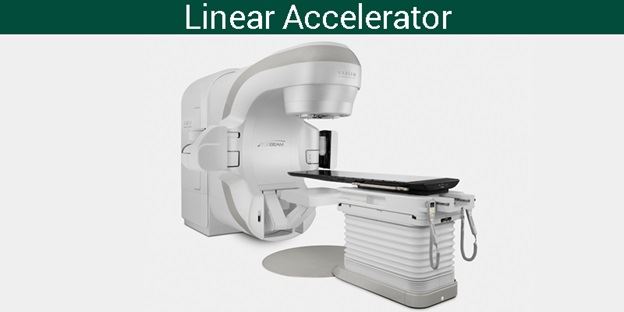What is a Linear Accelerator?
A linear accelerator also known as linear particle accelerator has many applications such as they generate X-rays and high energy electrons for medicinal purposes in radiation therapy, serve as particle injectors for higher-energy accelerators, and are used directly to achieve the highest kinetic energy for light particles (electrons and positrons) for particle physics.
A linear particle accelerator (often shortened to linac) is a type of particle accelerator that greatly increases the kinetic energy of charged subatomic particles or ions by subjecting the charged particles to a series of oscillating electric potentials along a linear beamline; this method of particle acceleration was invented by Leó Szilárd. Ionizing radiation in medicine works by damaging the DNA of cells including cancer cells.

You may also want to check out these topics given below!
How does a linear accelerator work?
Ion source gives a bunch of electrons which are then accelerated towards the first drift tube because of their negative potential and drift tube’s positive potential. When electrons come inside the tube, at that moment RF source shifts its polarity. First drift tube then becomes negatively charged and second drift tube positively charged. Electrons come outside of the tube because of its inertia and at that moment they are pushed with the first drift tube and attracted by the second one in the same direction.
As electrons are accelerating, their velocity becomes bigger and they travel a longer distance in the same time. That is the reason why drift tubes must be longer as electrons come closer to target; because of their greater velocity. If the very great velocity is needed, because of long drift tubes and a big number of drift tubes, linac must be very long.
How is safety ensured?
The patient’s safety is most important and is assured in many ways. Some safety measures of a linear accelerator are provided below:
- Before the treatment starts, a treatment plan is designed and approved by the radiation oncologist in collaboration with the radiation physicist and dosimetrist.
- The plan is checked thoroughly before treatment is given and quality procedures ensure that the treatment is delivered in a planned manner. There are many systems built into the accelerator that does not deliver a higher dose than the radiation prescribed.
- Every morning before any patient is treated, the radiation therapist performs checks on the machine using equipment called “tracker” to ensure that the radiation intensity is uniform across the beam and its working properly.
- The radiation physicist also conducts weekly and monthly checks of the linear accelerator.
Stay tuned with BYJU’S to learn more physics concepts with the help of interactive video lessons.


Thanks for giving such a amazing explanation about linac. First time ,search in byjus site.